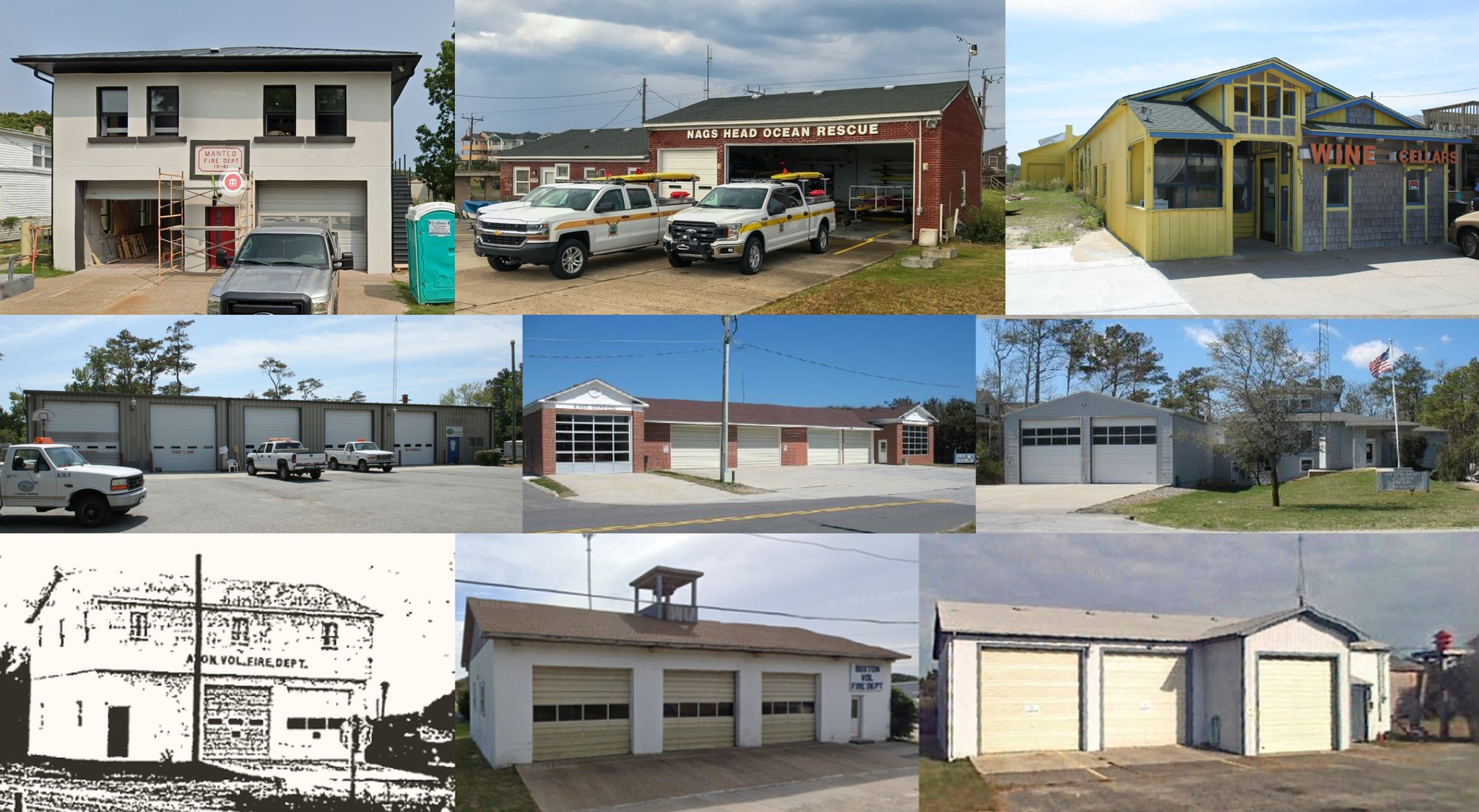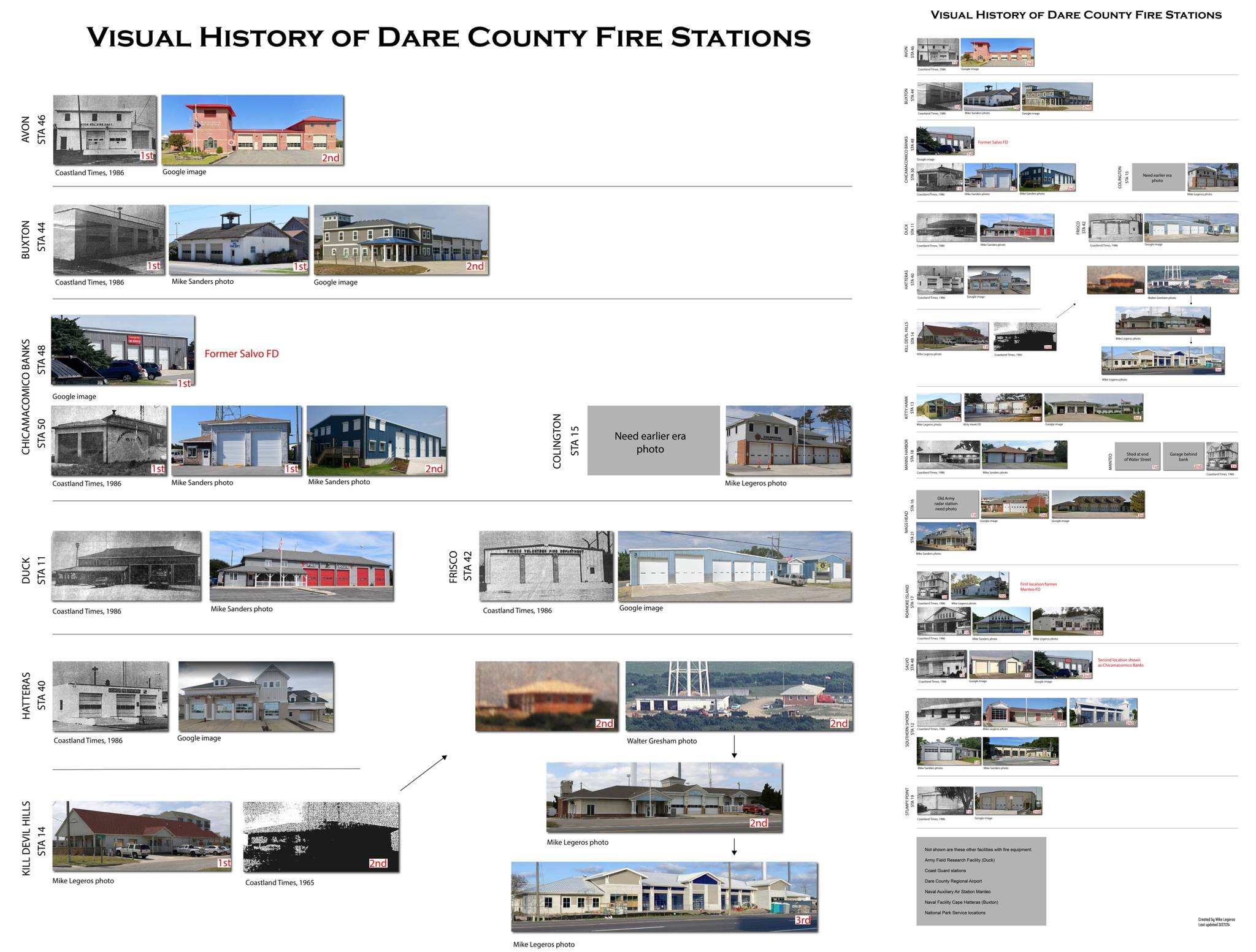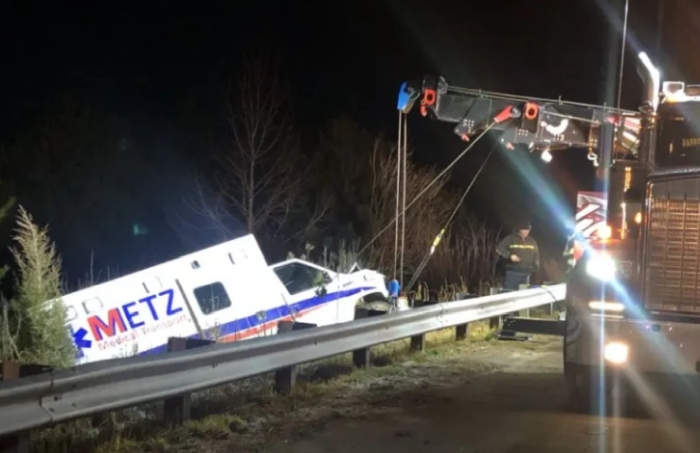The Wake County Fire Commission meets again on Thursday, April 11, 2024, at 6:00 p.m., at the Wake County Emergency Services Education Center, 221 S. Rogers Lane, Raleigh, NC 27610.
View agenda and meeting documents.
The Wake County Fire Commission meets again on Thursday, April 11, 2024, at 6:00 p.m., at the Wake County Emergency Services Education Center, 221 S. Rogers Lane, Raleigh, NC 27610.
View agenda and meeting documents.
For truck fans and list lovers, reader Nicholas Jones has created and compiled a list of all fire apparatus serving in Wake County, NC.
The document includes department and even company patches, vehicle photos with credits, and specs for most of the rigs.
View the Google document. (Link updated October 2025)
On Saturday, May 11, 2024, the following names will be added to the North Carolina Fallen Firefighters Memorial at the annual ceremony in downtown Raleigh. See below for narratives and notes, about each member and how they died.
Source: ncfff.org/memorial/annual-memorial/
Scott W. Hinson, 52
Concord
06/03/2021
Senior Firefighter Hinson died after an eight-year battle with cancer, and six years after retiring in 2015 due to his illness. He was a 27-year veteran of the fire service and a member of Concord FD since 1989. Read his NFFF memorial page.
Jeremy Michael Klemm, 45
Durham
09/18/2021
Driver/Engineer Klemm died after contracting COVID on August 17, 2021. He had served 15 years with Durham FD at the time of his death. Read his NFFF memorial page.
J. Sorrell Thomas, 67
Concord
12/08/2021
Senior Firefighter Thomas died after diagnosed with esophageal cancer in 2019. He had served 20 years as a member of Concord FD before retiring in 2016. Read his NFFF page.
David Scott Merritt, 54
Durham / White Cross
12/26/2021
Assistant Fire Marshal Merritt died after a short battle with intestinal cancer. He had been a member of Durham FD since 2014 and retired posthumously on January 1, 2022. He was also a member of White Cross FD.
Eddie Dewayne Fender, 57
Asheville
01/08/2022
Fire Investigator Fender died after 13-month battle with pancreatic cancer. He had served Asheville FD for 28 years. Read his NFFF memorial page.
David “Pumper” Scott Holmes, 51
LaGrange (Lenoir County)
02/28/2022
Captain and retired Fire Chief Holmes died after suffering a heart attack while operating an engine at a fire on February 20. He had served LaGrange FD for over 20 years, including ten years as Chief of Department. He also served on the town council for twelve years and was the mayor pro tempore. Read his NFFF memorial page.
James William Goudelock, 39
Dallas
07/23/2022
Captain Goudelock died of cancer, two and a half years after diagnosis. He was a 24 year veteran of the volunteer fire service and worked as a tow truck operator, and received the national Order of the Towman in 2021. Read his NFFF memorial page.
Minton “Butch” Beach III, 68
Oak City (Martin County)
03/22/2023
Fire Chief Beach died at the hospital of a heart attack, after feeling unwell and going home from training at the fire station on March 13. He had been a volunteer member for 49 years, and had worked for Edgecombe for 19 years, as Director of Emergency Services and as a county Building Inspector.
Ricky Dale Allen, 36
Conover
03/04/2023
Engineer Allen died after fighting cancer for over two years. He was a 19 year veteran of Conover FD, which he joined after two years as a junior firefighter. He also served with Taylorsville FD for the last year of his life. Read his NFFF memorial page.
Did you know that the Wilmington Fire Department has a foam task force of specialized equipment? It’s for use at the fuel tank farms at the Port of Wilmington. The assets are primarily housed at Station 7 and consist of:
The foam trailers and pumper trailer were built by Combat Support System. They were delivered in 2015.
View this PDF fact sheet about the system.
See Legeros photos of the trailers from June 2024.
Morrisville is moving away from quints. Watch this presentation by Fire Chief Nathan Lozinksy to town council, about MFD evaluating changing from their current “quint concept” (adopted in 2010) to a traditional engine/ladder deployment. Or view his slides (PDF).
As he explains, the concept worked better when it was implemented. But today, the department has newer challenges and a greater pool of nearby resources, due to their participation in the CAM (Cary-Apex-Morrisville) system. Next steps, developing a new deployment model and presenting to council in a later month.
Research notes on the histories of fire departments and fire stations in Dare County, North Carolina. Last updated March 31, 2024.
 Former fire stations. Left to right, top to bottom: Manteo, Nags Head, Kitty Hawk, Kitty Hawk, Southern Shores (demolished), Southern Shores (demolished), Avon, Buxton, Salvo (Demolished).
Former fire stations. Left to right, top to bottom: Manteo, Nags Head, Kitty Hawk, Kitty Hawk, Southern Shores (demolished), Southern Shores (demolished), Avon, Buxton, Salvo (Demolished).
Fire Department Histories
See these research notes (PDF) for extensive information.
Fire Stations – Visual History

Fire Stations – Research Notes
Continue reading ‘Dare County Fire Departments – Past and Present’ »
See photos by Legeros | Listen to radio traffic
Two alarms were struck on Wednesday, March 13, 2024, at a residential structure fire in the 2100 block of Karns Place in very north Raleigh. Dispatched 3:02 a.m. Upgraded to working fire while units were en route, due to callers reporting that the entire structure was involved, and that fire had spread to the house next door.
Wake Forest Engine 5, dispatched as auto-aid, was first-arriving. They reported two houses on fire, and with the primary fire building heavily involved. Both were two-story, single-family dwellings, built the early 2000s. Raleigh Engine 25 was right behind them. There was a hydrant located in front of Engine 5.
Crews made an interior attack to start. Within five minutes of arrival, a second alarm was requested. Staging was designed at Hopeson and Falls River Avenue. Defensive operations on the primary fire building started about 20 minutes after arrival. Evacuation tones were sounded and crews were withdrawn.
In addition to the second alarm companies, Engine 15 and Rescue 16 were added to the call, clearing a overturned tractor-trailer truck with a fuel leak on I-540 at Six Forks Road, that occurred just before this fire. Engine 22 and Ladder 22 were on that call, and would have otherwise been first-due to the fire.
Three aerials were deployed (L15 and L4 in front, L23 in rear), two flowed during suppression (L15, L4) and the third (L23) flowed during overhaul. At least one ground monitor was used in the rear of the structure. Three hydrants supplied water, including one with a supply line brought by Engine 9 to Ladder 23. The fire was controlled at 4:29 a.m. There were no reported injuries.
The primary fire building at 2108 Karns Place was a two-story, single-family dwelling with 2,303 square-feet. Built 2005.
The involved exposure at 2104 Karns Place was a two-story, single-family dwelling with 2,072 square-feet. Built 2003.
There were three occupants in each structure, both families were displaced.
Run Card
From radio traffic:
0301 – E25 E4 E19 E18 L15 L4 Sq7 (rescue resource) B4 B5 ISO14 + EMS44
0301 – WFFD E5
0308 – EMS__ EMS41 EMS51
0308 – A28 B3 DC1 INV1 (working fire)
0313 – E28 E23 E9 L23 L6 (second alarm)
0314 – E22 (clearing I-540, added to call, but didn’t report to scene)
0315 – R16 (clearing I-540)
0318 – E15 (clearing I-540)
0323 – L14 to 15
0324 – E17 to 25
0350 – EMS42
0408 – L14 to 4
0409 – E27 to 19
Plus: B1, Asst. Chief of Training
To celebrate Women’s History Month, here are 125+ newspaper articles on the history of female firefighters in North Carolina, both volunteer and career, from 1973 to present. Primary sources are newspapers.com (paid) and Digital North Carolina Newspapers (free). Most of the stories are from earlier decades. View via this Google Drive.
Run card for the major commercial structure fire at 6300 US 64 in Manns Harbor in Dare County on February 27, 2024.
| Sta 11 – Duck (32.0 miles) | E11 |
| Sta 12 – Southern Shores | E12 E121 Rehab 12 |
| Sta 13 – Kitty Hawk | E13 |
| Sta 14 – Kill Devil Hills | Truck 14 (Sutphen tower, 1500/300/100′) |
| Sta 15 – Colington | E151 (secondary drafting supply) Chief 15 Rehab 15 |
| Sta 16 – Nags Head Sta 21 – Nags Head |
E21 Deputy Chief 16 Squad 16 (manpower) |
| Sta 17 – Roanoke Island Sta 17 – Wanchese |
Chief 17 Asst. Chief 17 Tanker 17 Truck 17 (Pierce tower, 2000/300/100′) Engine 171 1732 1735 |
| Sta 18 – Manns Harbor | 1823 1827 E18 Tanker 18 |
| Sta 19 – Stumpy Point | 1923 E19 (pumping from pond, as water point) |
| Sta 40 – Hatteras (68.5 miles) | E40 |
| Sta 42 – Frisco | E42 |
| Sta 44 – Buxton | E441 BC? |
| Sta 46 – Avon | E46 |
| Sta 48 – Salvo | |
| Sta 50 – Chicamacomico Banks | E503 |
| Forest Service | 1321 ____ (6,000 gallon tanker) |
| Corrolla | E66 M62 (manpower support) BC |
| Currituck County Fire | BC106 |
| Currituck County EMS | 101 Mass Casualty Bus |
| Dare County EMS | Medic 21 |
| Dare County FM | FM1 |
| Lower Currituck | Engine |
| Tyrrell County | Tanker #1 Tanker #2 Others? |
| TBD | Deputy Chief 1 (EMS?) |
| TBD | MSU1 |
Research notes on fatal ambulance accidents in North Carolina. Most involve collisions with other vehicles. Sources include newspapers.com, Digital North Carolina Newspapers, the Fayetteville Observer archives via News Bank, and numerous Google searches.
See source documents in this Google Drive.
2020 to 2024
February 13, 2024 – Cumberland County
Cape Fear Valley Medical Center ambulance collided with a Dodge Dakota pick-up truck on Butler Nursery Road near Nash Road just about 10:30 p.m. The ambulance was operating its emergency lights and travelling eastbound. It had slowed to make a left turn into residential driveway when the driver of the truck attempted to pass the emergency unit. The resulting collision caused the truck to leave the roadway and strike a tree. The 42 year-old female driver of the truck died at the hospital early the next morning. The two EMS members aboard the ambulance were not seriously injured. Two others riding in the truck sustained non-life threatening injuries. Investigators estimated that the truck was travelling 70 mph in a 45 mph zone. The accident happened less than two miles from the driver’s home. Source: Fayetteville Observer, 2/17/24; WRAL, 2/24/24.
August 3, 2023 – Pender County – Two Killed
Pender EMS & Fire ambulance collided with a 2010 Ford Edge SUV on US 117 near St. Helena around 2:00 p.m. The SUV crossed the center line and struck the ambulance head-on. Three other vehicles were also involved in the crash. The ambulance was transporting a 54 year-old female from Jacksonville to Novant Health New Hanover Regional Medical Center in Wilmington. The transported patient died at the scene. The driver of the SUV was hospitalized and died of her injuries on August 12. She had been charged with driving while impaired, and other drivers had reported her erratic driving just before the collision. The two EMS crew members were seriously injured. Source: Carolina Coast Online, 8/6/23; WWAY, 8/14/23.
April 25, 2023 – Johnston County
MedEx medical transport ambulance collided with a motorcycle on Barbour Road near Wilson’s Mills Road just before 4:52 p.m. The motorcycle crossed the centerline into the path of the emergency vehicle. The 35 year-old male motorcyclist was ejected and died from his injuries. Source: Johnston County Report, 4/26/23; WCNC, 4/26/23.
June 19, 2022 – Duplin County – Patient Killed After Exiting Ambulance
Womack Army Medical Center [correct?] ambulance was carrying a solider from Fort Bragg, who had become ill during a training exercise, and had been diverted from Womack to the Naval Hospital at Camp Lejeune, due to limited beds at Womack. There were two EMTs in the ambulance along with an Army Sergeant escorting the patient. The ambulance was traveling eastbound on I-40 near Warsaw. There was a struggle that started inside the back of the ambulance. The ambulance pulled onto the shoulder of the interstate and came to a stop. The 28-year old male patient jumped out the back door of the ambulance, ran toward US 117, and was struck by an oncoming vehicle on US 117, and died at the scene. He was pronounced dead at 3:47 a.m. Investigators believed that the patient’s exit from the ambulance was related to his medical condition. Source: News12, 6/23/22; WRAL, 6/23/22.
January 22, 2022 – Wake County – Cardiac Patient Died After Collision, During Transport By Second Ambulance
METZ medical transport ambulance crashed on Interstate 87 near Exit 13 near Knightdale Boulevard around 4:00 a.m. The ambulance hit a patch of black ice, left the roadway, and overturned down an embankment. It was transporting a cardiac patient to Duke University. The patient went into cardiac arrest while being transported from the crash site by a second ambulance and died at the hospital. The two ambulance workers were also hurt. Source: JEMS, 1/21/22.
 Continue reading ‘Fatal Ambulance Accidents in North Carolina’ »
Continue reading ‘Fatal Ambulance Accidents in North Carolina’ »